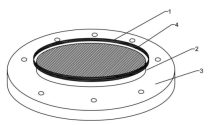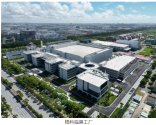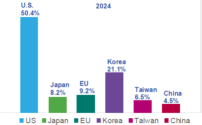Another thing is that this is mostly datacenters with extremely expensive GPUs and AI hardware. Is not like the US is manufacturing more EVs, smartphones, TVs or upgrading their 5G networks.
In fact SiC manufacturer wolfspeed just declared bankruptcy I think they couldn't adapt fast enough when Chinese companies ramp up their production and reduced prices of SiC modules.
And there lies the danger sales vs volume. Company A is first in the market and is selling automotive SiC modules at 1500 dollars. Company B is bit later at the time but has catch up and start selling SiC modules at 500 dollars. On Paper at first company A has larger revenue but company B is selling more volume and gaining more clients than company A even if company B revenue seems lowers. By time magic of being the first fade away if company A has not find ways to make the products competitive they are in big trouble.
Yes, and let us extrapolate this further.
The vast majority of chips consumed in the US by dollar amount is in AI. The most important items in this sector are the NVIDIA chips.
In the AI race, China and the US are neck and neck BUT the US has direct access to NVDA while China does not.
So the rarity of NVDA in China should push chips like A100 and H100 to astronomical prices there. And it did in the years immediately following Biden's ban.
But beginning in the third quarter of 2024:
Smaller Chinese cloud providers charge around $6 an hour for a server with eight A100 Nvidia chips. Compared to similar US vendors, with an hourly rate of $10, advanced Nvidia chips are not difficult to come by in China.
However, larger Chinese cloud operators, like Alibaba, must ensure compliance with US export regulations and charge $12-$18 an hour for server rentals. Still, their prices are lower than comparable US servers, which charge between $15 and $32 an hour. Chinese companies can also rent Nvidia processors online from US-based companies like Microsoft and Amazon.
So NVDA chips in China had crashed while China has expanded AI in the commercial sectors even more than the US.
Apr 3, 2025 — Research by McKinsey, a consultancy, suggests that 19% of Chinese people use AI at work, whereas 12% of North Americans do.
Considering that there are four times more Chinese than Americans, it is much than a mere 7% advantage in favor of China in overall adoption and use of AI.
So we have more adoption of AI but a huge (and continuing) drop in the price of the foremost AI chips and those which are banned to China and which SHOULD be astronomically expensive.
Sorry but one cannot help but find it immensely optimistic to anyone following both semicon and AI development in China with these implications:
1) domestic chips are of such quality and quantity that the fast growing Chinese AI community is basically ignoring NVDA chips (painstakingly smuggled in or patched to overseas DCs), and using obstensibly local ones,
2) AI compute in China -- despite the US embargo -- has become so inexpensive that the smaller developers are finding it more affordable to use NVDA chips(!?!) from small Chinese providers than using the large ones who are increasingly building out Ascend clusters,
3) Couple with the DeepSeek sea-change where pure software logic can provide results comparable to American companies using brute force compute and you have an environment set up in China where the bar to entry for AI is far lower and allows a far wider breadth of adoption they could ever do in the US no matter how much NVDA makes every year.
There will be a tsunami of unimaginable proportion coming out of China on AI. It will be a sea of affordable Chinese AI chips, models and practices flooding acrossing the world. Just like with cars, US AI will be a island protected by sky-high prices only Americans and few select other Westerners will pay for.





